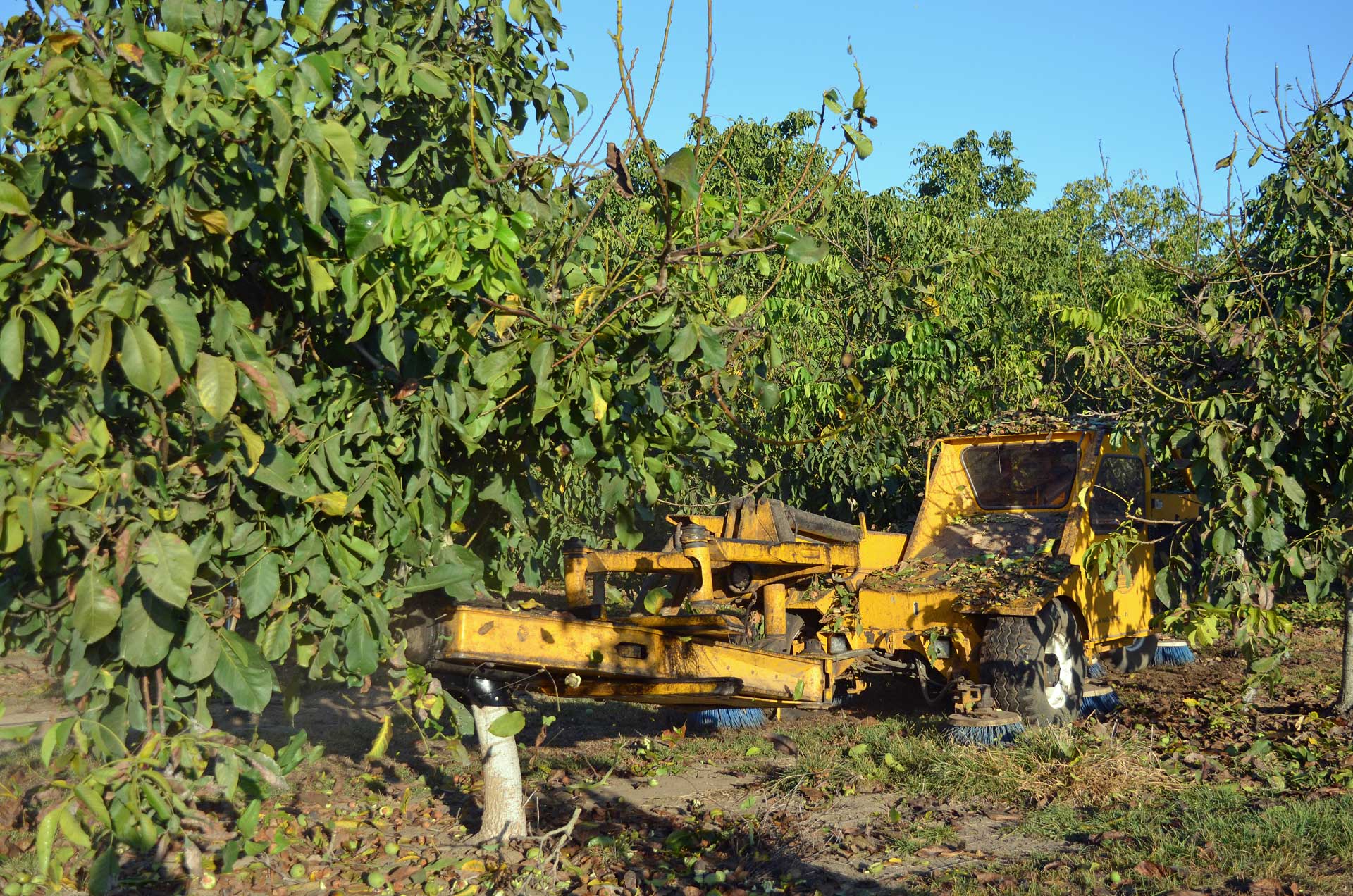
Numerous walnut tree training trials done with different varieties and in different growing regions led UCCE researchers to the same conclusion: very little pruning is necessary to grow a productive tree.
In UCCE’s Virtual Walnut Series, Integrated Orchard Systems Specialist Bruce Lampinen outlined training trial results from 2004 to present day. Collaborators included former UC farm advisors John Edstrom, Janine Hasey and Carolyn DeBuse among others.
The trials were undertaken, Lampinen said, because of the pervasive belief among many growers that walnut trees needed to be pruned to be productive.
After 15 years of data collection on pruned versus unpruned trials, Lampinen said that no advantage to pruning cuts during orchard development was proven. The exception was removal of branches that blocked orchard equipment.
“The sooner you stop pruning in an orchard’s life, better tree structure and better yield will result,” Lampinen said.
Pruning-related problems include slightly lower quality and size for pruned trees, more scaffold breakage in years after pruning stops, more rapid shading of lower canopy (causing nut quality issues) and lower water use efficiency in years one through six. Economic returns are also lower in these years. Unpruned and unheaded trees also did better in high winds than pruned trees.
In one trial started at Nickels Soil Lab, two-year-old Chandler nursery grafted trees were planted in 15×22 spacing. Three treatments, heavily pruned, minimally pruned and no-prune, were initiated. From third-leaf stage, yields were higher in the unpruned trees, and by the eighth year, cumulative yields were 15.33 tons per acre compared to the heavily pruned trees at 12.98 tons per acre.
Another significant finding was water use efficiency in unpruned trees. At third-leaf, pruned trees needed 10 times more water than unpruned trees. Based on pounds produced per inch of applied water, the unpruned trees had a 100% efficiency compared to 79% for heavily pruned trees.
Growers who opt for no-prune will need to take care not to overwater the trees, Lampinen said.
Recommendations for developing a new orchard include:
- Big is not necessarily better for bareroot trees.
- If possible, plant unheaded trees and prune as little as possible.
- Rapid growth in response to cutting back to three to five buds causes a lot of problems.
- Slow and steady growth in the early years is better than pushing for growth.
- Problems are seen with trees being staked and tied tightly.
- Do not use lightweight PVC for stake extensions.

Cecilia Parsons
Cecilia Parsons has lived in the Central Valley community of Ducor since 1976, covering agriculture for numerous agricultural publications over the years. She has found and nurtured many wonderful and helpful contacts in the ag community, including the UCCE advisors, allowing for news coverage that focuses on the basics of food production.
She is always on the search for new ag topics that can help growers and processors in the San Joaquin Valley improve their bottom line.
In her free time, Cecilia rides her horse, Holly in ranch versatility shows and raises registered Shetland sheep which she exhibits at county and state fairs during the summer.















